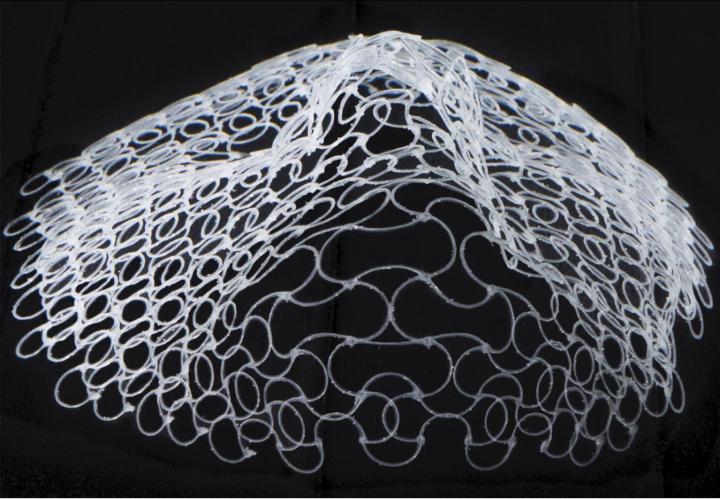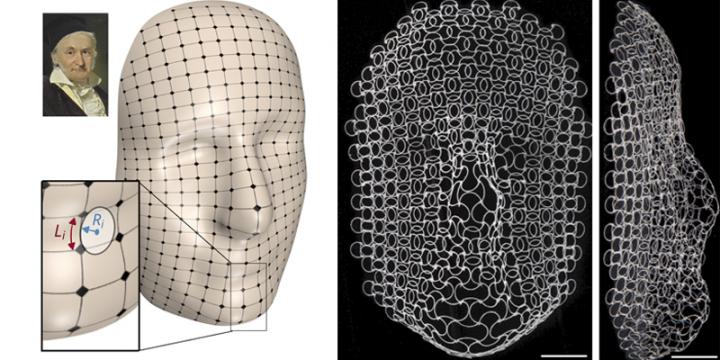
Developed by researchers at Harvard University the lattices are composed of multiple materials that grow or shrink in response to changes in temperature. To demonstrate the technique, the team printed flat lattices that morph into a frequency-shifting antenna or the face of pioneering mathematician Carl Friedrich Gauss in response to a change in temperature.
Shape morhphing elastomer could lead to tuneable lenses
The shape of wings to come: morphing materials
"Using mathematics and computation to design form, and a combination of multi-scale geometry and multi-material printing to realise it, we are now able to build shape-shifting structures with the potential for a range of functions," explained L Mahadevan, Professor of Physics and Organismic and Evolutionary Biology at Harvard
To create complex and doubly-curved shapes the team turned to a bilayer, multimaterial lattice design. "The open cells of the curved lattice give it the ability to grow or shrink a lot, even if the material itself undergoes limited extension," said Wim M. van Rees co-first author of a paper on the project published in the Proceedings of the National Academy of Sciences.
However, simply growing and shrinking the lattice on its own isn't enough to create truly complex shapes, so to achieve this the group printed materials with different thermal expansion behaviour in pre-defined configurations. This enables them to control the growth and shrinkage of each individual rib of the lattice, which gives rise to complex bending of the printed lattice both within and out of plane.

The researchers used four different materials and programmed each rib of the lattice to change shape in response to a change in temperature. Using this method, they printed a shape-shifting patch antenna, which can change resonant frequencies as it changes shape.
To showcase the ability of the method to create a complex surface with multiscale curvature, the researchers decided to print a human face. They chose the face of the 19th century mathematician who laid the foundations of differential geometry: Carl Friederich Gauss. The researchers began with a 2D portrait of Gauss, painted in 1840, and generated a 3D surface using an open-source artificial intelligence algorithm. They then programmed the ribs in the different layers of the lattice to grow and shrink, mapping the curves of Gauss' face.
This inverse design approach and multimaterial 4D printing method could be extended to other stimuli-responsive materials and be used to create scalable, reversible, shape-shifting structures with unprecedented complexity.
The group is now exploring commercial opportunities for the technology in application areas including soft electronics, smart fabrics, tissue engineering, and robotics.




Nanogenerator consumes CO2 to generate electricity
Whoopee, they've solved how to keep a light on but not a lot else.